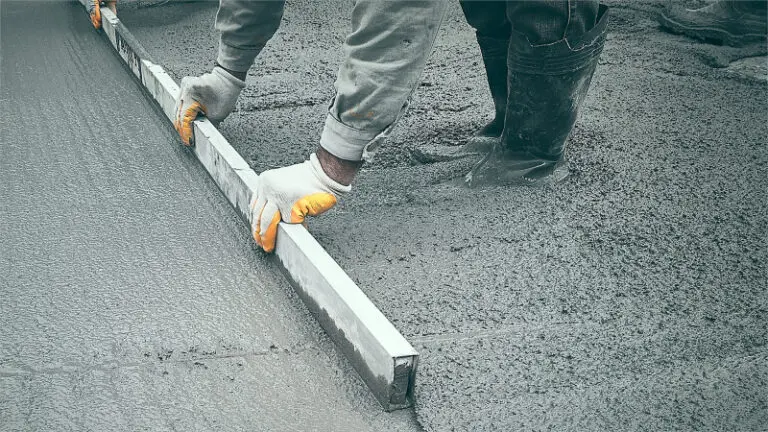
JSW Cement is attempting to carve a niche in the highly competitive cement industry by focusing on ‘Green’ cement. By leveraging its group relationships and manufacturing cement using steel and iron plant waste (instead of limestone), its GGBS cement offers a cleaner alternative.
However, the company incurred losses in FY25 and performed worse than the industry average on several financial ratios. It’s INR 36000 million IPO is part fresh offer and part an offer for sale.
Offer Details of the IPO
Total Offer Size: Up to INR 36,000 million
Price Band: Rs. 139 to Rs. 147 per Equity Share
Book Running Lead Managers (BRLMs)
Objectives of the IPO:
De-leveraging/Repayment of Debt
Capital Expenditures
Cement Industry Overview
The cement industry is a vital part of the construction sector, providing essential building materials for infrastructure development, housing, and commercial projects. The industry produces cement, a binding agent that holds aggregates together to form concrete, which is used in various applications, including construction, infrastructure, and industrial projects. The end customers of the cement industry include construction companies, builders, and infrastructure developers.
Key Segments
The cement industry can be broadly segmented into two main categories:
Clinker production involves the extraction of limestone and other raw materials, followed by the production of clinker through a process of calcination. Cement grinding, on the other hand, involves the grinding of clinker with gypsum and other additives to produce cement.
Another key segment within the industry is Blended Cement, which involves the production of cement using a combination of clinker and other additives, such as fly ash or slag. Blended cement is gaining popularity due to its environmental benefits and cost-effectiveness.
Product Types
The cement industry produces a range of products, including:
These products are used in various applications, including construction, infrastructure, and industrial projects.
Industry Size and Growth Trends
The Indian cement industry is the second-largest cement producer in the world, with a total capacity of approximately 668 million tonnes as of 2024-25. The industry has been growing at a steady pace, with a compound annual growth rate (CAGR) of 7-8% over the past five years. Going forward, the industry is expected to witness a slightly higher growth of 7.5% to 8.5% (based on sources in RHP).
Segment-wise Growth Trends
The industry can be broadly segmented into three categories: housing, infrastructure, and industrial/commercial. The housing segment accounts for the largest share of cement demand, followed by infrastructure and industrial/commercial segments.
Key Drivers of Growth
The growth of the Indian cement industry is driven by several key factors, including:
JSW Cement Limited: A Leading Green Cement Player
JSW Cement Limited is a leading Indian cement manufacturer, part of the JSW Group, a diversified business conglomerate with interests in steel, energy, infrastructure, and cement. The company was founded in 2006 by Sajjan Jindal, a member of the Jindal family, which has a long history of entrepreneurship and industrial development in India.
History and Background
JSW Cement Limited was established in 2006 as a subsidiary of JSW Steel Limited, one of India’s largest steel manufacturers. The company’s initial focus was on producing high-quality cement for the Indian market, leveraging the group’s expertise in steel manufacturing and its extensive distribution network. Over the years, JSW Cement has expanded its operations, investing in new manufacturing facilities and diversifying its product portfolio to cater to the growing demand for cement in India.
Segments and Products
JSW Cement operates in the following segments:
Manufacturing Facilities
JSW Cement has a strong manufacturing presence in India, with several facilities located across the country. The company’s manufacturing facilities are equipped with state-of-the-art technology, ensuring high-quality products and efficient operations.
Associations and Partnerships
JSW Cement’s parent group companies include:
Competitive Landscape
The Indian cement industry is highly competitive, with several large players operating in the market. The company operates in a crowded market space, with numerous established players competing for market share.
Major Competitors
Some of the major competitors in the Indian cement industry include:
Competitive Positioning
In comparison to its competitors, the company has a strong presence in the southern and western regions of India.
Overall, while the company faces intense competition in the Indian cement industry, its focus on quality, customer service, and diversified product mix has enabled it to maintain a strong competitive position.
Strengths
Weaknesses
Brief Financial Profile
Anemic revenue growth: The company has not witnessed any revenue growth over the past two years. This is despite the significant expansion in its clinker and GGBS capacity. A key reason for the anemic growth has been falling realisations. South India is one of the most competitive cement markets. With lower regional utilisation and high competition, realisations have likely remained under pressure.
Slipped into losses in FY25: Continued losses at its associated companies include Shiva Cement and JSW Cement FZC, along with falling realisations have led to the company making losses in FY25. As the company made losses, a comparison of P/E valuations is not possible.
Table: Key Competitors
| Company | Revenue (INR million) | EBITDA (INR million) | EV/EBITDA | EPS |
| JSW Cement | 58,130.7 | 8,153.2 | -1.2 | |
| UltraTech Cement Limited | 759,551.3 | 133,020.0 | 28.4 | 205.1 |
| Ambuja Cements Limited | 336,977.0 | 86,250.0 | 16.8 | 17.0 |
| Shree Cement Limited | 192,828.3 | 45,232.5 | 23.0 | 311.2 |
| Dalmia Bharat Limited | 139,800.0 | 24,070.0 | 17.4 | 36.4 |
| JK Cement Limited | 118,791.5 | 20,270.0 | 26.5 | 111.4 |
| The Ramco Cements Limited | 85,184.0 | 12,737.0 | 25.7 | 11.5 |
| India Cements Limited | 41,487.8 | -1,736.9 | 153.2 |
Source: RHP
Table: Financial Profile
| Particulars (INR m) | Fiscal 2025 | Fiscal 2024 | Fiscal 2023 |
| Revenue from operations | 58130.71 | 60281.03 | 58367.24 |
| Total expenses | 58598.35 | 58082.1 | 58386.77 |
| Share of loss from joint venture and associates | -984.73 | -820.28 | -186.88 |
| Restated profit/(loss) before tax | -436.43 | 2243.58 | 1248.44 |
| Total tax expenses | 1201.26 | 1623.45 | 208.06 |
| Restated profit/(loss) for the year | -1637.69 | 620.13 | 1040.38 |
Source: RHP
Related Tags

![]() IIFL Customer Care Number
IIFL Customer Care Number
(Gold/NCD/NBFC/Insurance/NPS)
1860-267-3000 / 7039-050-000
![]() IIFL Capital Services Support WhatsApp Number
IIFL Capital Services Support WhatsApp Number
+91 9892691696
IIFL Capital Services Limited - Stock Broker SEBI Regn. No: INZ000164132, PMS SEBI Regn. No: INP000002213,IA SEBI Regn. No: INA000000623, SEBI RA Regn. No: INH000000248, DP SEBI Reg. No. IN-DP-185-2016, BSE Enlistment Number (RA): 5016
ARN NO : 47791 (AMFI Registered Mutual Fund Distributor), PFRDA Reg. No. PoP 20092018

This Certificate Demonstrates That IIFL As An Organization Has Defined And Put In Place Best-Practice Information Security Processes.